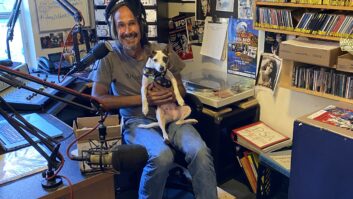The author is membership program director of the National Federation of Community Broadcasters. NFCB commentaries are featured regularly at www.radioworld.com.
This past week, the Public Media Development and Marketing Conference brought together community and public broadcasters to talk about two critical issues facing our space: fundraising and community engagement. The good news: there’s progress being made, with some success stories. The bad? How community radio breaks through consistently remains an elusive formula.
To its credit, Greater Public, organizer of PMDMC, made sure to tailor many of its discussions to resonate with rural and smaller stations, including community radio. People like Sally Kane were there to advocate on behalf of community media’s interests. At conferences like the one in San Francisco, there’s a sense that the stations outside of the mega-membership universe must be supported. Their survival is crucial for diversity, new producers and noncommercial media as a whole.
In addition, it’s good to know that, while it is in the distinct minority at gatherings like PMDMC, community radio has no shortage of advocates.
NPR, whose programming is featured on many community and public radio stations, wants to do more fundraising with local outlets. The Association of Independents in Radio has partnered with community stations to tell provocative stories, by far the most effective way of drawing listenership and support. Folks like GoalBusters’ Jim Anderson are on the road, teaching skills to help community radio leaders foster new relationships and revenue streams.
Yet for many community radio stations, summer pledge drives are still a thing, because the funds just aren’t there to sustain these institutions between spring and fall campaigns. Although it’s cool to hear many community radio stations tapping into the 50th anniversary of the Summer of Love during their latest marathons, I suspect these fantastic stations would like to stay with their regular programming mix.
For those who didn’t make PMDMC, there remain a few truisms to growing stations in the new economy.

Effective fundraising and engagement require community radio to think unconventionally. Most stations tend to fall back on pledge drive and events — benefit concerts, speakers and the like — to shore up operating funds and attract new listeners. However, as more nonprofits turn to this approach and sprinkle in direct mail and social, it becomes harder for stations to break through to donors. What’s a community radio station to do?
First and foremost, stations must start to value their data more. Because of turnover, community radio outposts are sometimes not as strong here as they need to be. Your member data is more than addresses and phone numbers. Member data is your relationship with the people who love what you do. In addition, the internet has cultivated people to feel that your ability to recall their interests via data reflects your attention and care. However, you don’t demonstrate your value of donors by tracking this information in an occasionally updated FileMaker document. It’s important for community radio to think strategically about members. You don’t need to be in the middle of Manhattan to be technologically sophisticated. Consider how you’d like an organization to know you and your history with it, and let that guide your planning.
Moreover on the subject of membership, I am also surprised how relatively few resources community radio stations put into their membership departments. I encourage every community radio station to evaluate this carefully. For example, deciding not to mail to members, understaffing membership posts and selecting the wrong people will come back to haunt you. Membership departments deal with your most precious asset: donors.
Community engagement is one of the other pieces to this discussion. If you’re looking for ideas, the Hearken blog is a good starting point. Not everything fits community radio’s scale, but plenty of recommendations can be tailored to your station’s needs. Engagement has been a buzzword for awhile. What it practically means for community radio, though, is getting the casual audience to personally invest themselves in you. People who are more engaged are more likely to give and be a part of your local work. And, as every good community radio station knows, those new people are your future board members, volunteers, staff and leadership.
I am impressed every day by the number of talented people in community radio who make a lot out of very little in terms of money. Some of my favorite stations truly rely on their partners and longtime supporters for help on every level. Community broadcasters nationwide do a marvelous job. Winning over the next generation of members, programmers, underwriters and partners is a goal all of them share.












